K Murali (Ajith)
New grounds for Brahmanical aggression are now being prepared following the installation of its victory pillar in Ayodhya, post the demolition of Babri Masjid. The Gyanvapi mosque in Varanasi is now the new target of Brahmanical fascist forces. This comes well after the Indian parliament passed a law, after the Babri Masjid issue, delegitimising any further claims of a similar nature in any other part of the country. The Indian courts, paying scant regard to this law, had permitted an investigation at the Gyanvapi mosque for the remnants of a Hindu temple. Reports are now coming about the discovery of such remnants. Not wasting time, a Varanasi Court allowed the Hindu community to do worship in the mosque. This was promptly initiated. The mosque administration approached the Supreme Court to stop this injustice, but the court refused to consider the urgency of the issue. Instead, it sent them back to the High Court. That court kept it aside stating that it will consider the matter without delay. This was utilised by the Brahmanical fascist forces to start their pooja. The court will now most probably pronounce that since pooja is going on there that too must be considered while settling the matter.
What emerges from the whole affair is this – one cannot rely on the Constitution and the institutions of the state, like the judiciary, which have been built with the Constitution as their backbone, to counter Brahmanical Hindutva fascism. The issue is also not going to end with the Gyanvapi mosque. A similar matter is live in Mathura (U.P.) The Sangh Parivar forces are certainly going to create similar issues in other parts of the country too. Therefore, the violence they carried out in Ayodhya needs to be probed more deeply.
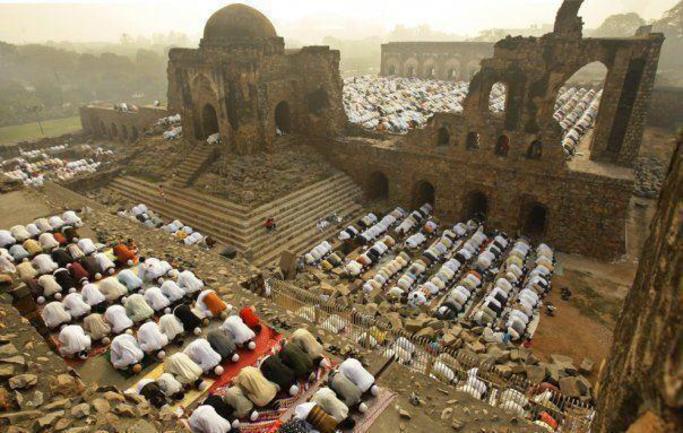
There are a few things which stand out in the criticisms that came up before and after the recent consecration of the idol at Ayodhya. One of them is that the BJP has politicised a purely religious matter for its narrow gains. Another is about how this wasn’t done according to rituals prescribed in any religious text. The third is that this is an attack on the secular nature of the country. If we analyse these accusations one can see that mainstream discourse does not see any issue in the building the temple there or consecrating an idol within it. The concern is about the way it has been done. The fact that a mosque existed there for centuries and that it was demolished to build this temple is dismissed as insignificant by this dominant discourse.
The argument of the Brahmanical fascist forces is that there was a temple there and this was demolished to build a mosque. This has not been clearly proven in any way. Even if this is the reality, what are we to make of a thinking that stands for taking revenge for an issue that happened 500 years ago? If that logic is accepted, where do we draw a line? If it is accepted that something that happened in the past should be avenged in the same bloody way, would the Savarna forces also accept that Dalits have the right to avenge the violence that their ancestors suffered in the past? Many of the Hindu temples in India used to be Buddhist Viharas and Jain temples. Will these Brahmanical forces also accept that these temples too need to be demolished to be rebuilt as Viharas and Jain temples? If we analyse the claims made by Brahmanical forces, keeping these questions in mind, we can see that this is not about some injustice that happened in the past. It is about the political demands of the ruling classes in the present. To understand the nuances of this further, one needs to see the primary position that Brahmanism has in the ideological make-up of the ruling classes. If we don’t understand this point, then we will not be able to properly evaluate the situation that emerged in Ayodhya and the role it has played in the Indian political sphere.
Except for a few, almost all ruling class parties, participated in one or the other Brahmanical ritual on January 22nd. Those who rejected the invitation to go to Ayodhya as observers had done the same solely in a game of upmanship with the BJP. In view of this there are those who assert that the foundations of a Hindutva politico-cultural milieu were laid down after the Sangh Parivar forces consolidated their position in the Central government. The underlying assumption is that this was absent among the ruling classes till then. That is wrong. Earlier, for a long period, Brahmanical Hindu presence was not explicit. It was implicit. Moreover, it was also moderate. This differentiation between moderate and aggressive stances of Brahmanism has been criticized. It is argued that Brahmanism is intrinsically aggressive in nature and has always been so, just like any other ruling class ideology. Yes, that is true. The differentiation being made here is about the form that it adopted during a particular period. A look at the changes made by the Indian National Congress in its policies, while grooming itself under colonial rule to become the leader and representative of the ruling classes-to be, will be helpful to understand this matter of moderate and aggressive Brahmanism.
The Evolution of Brahmanism as a Form of Hegemonic Consensus
Comparing the Brahmanism of Tilak and Gandhi, one can see that the former was explicit and aggressive, while the latter was implicit and moderate in nature. During Tilak’s time, the social reformers within the Congress were expelled. Under Gandhi, the Congress adopted the eradication of untouchability as a program and started the Harijan Seva Sangh. Without understanding the repositioning of the ruling classes from the Gandhian stance to the explicit Brahmanism seen today and the distinctions within it, one cannot make a proper analysis of the increasing presence of Brahmanical Hinduism now seen in the country. The Sangh Parivar forces represent its aggressive stance. The Congress and other ruling class parties still favour its moderate form. But all of them stand for an explicit expression of Brahmanism. Hence, the active and explicit assertion of Brahmanism in the socio-cultural and political sphere is not just a matter of the Sangh Parivar forces. It is common to all ruling class forces.
Therefore the revisionist parties too back it. This is exactly why the CPM, CPI and other revisionist parties did not take a firm stand on the Babri Masjid issue during the 1980’s when aggressive claims were being raised by the Sangh Parivar. Instead of declaring that it should be handed over to the Muslims since it is a mosque, the CPM pleaded that the ‘dispute’ should be resolved amicably. The CPI called for building a memorial to secularism in that place! They even castigated those backing the idea of handing over that land to Muslims as ‘supporters of Muslim communalism’. Their current stance is a logical development of that surrender to Brahmanism. They stated that they had no issue with building the temple there. The quarrel was over government participation. This is what is said in the resolution of the CPM Central Committee. They have not addressed the matter in the context of rising Brahmanical Hindutva fascism in the country.
Frontline magazine, which is allied to revisionist politics, has published an article which claims that the positions taken by Ram, makes him a “Maryada Purushottam”(ideal man). What ideals has the son of Dasharatha and the King of Ayodhya followed? They were the ideals of Brahmanical Varnashrama Dharma. This can be seen all over the Ramayana. When he obeyed the order of his father without questioning the same and set off to live in exile in the forest, he was following the principles set by Brahmanical patriarchy. When he forced Seeta to walk into a bonfire in order to test her chastity and when he killed Shambuka, we see the same Brahmanical values. This is why Ram has been given prime position in Brahmanical theology. When it is claimed that he lived an ethical life, without taking a critical look at those values, that only goes to reveal the interests that are being pandered to. 50 years ago, no one who considered themselves progressive, even those that belonging to ruling class parties, would have dared to write something like this. Views of this sort, not necessarily associated with the politics of Hindutva, can be made today because the ruling classes as a whole need explicit Brahmanism.
Replacing the implicit and moderate Brahmanism that was favoured earlier, aggressive and explicit Brahmanism has become dominant in the hegemonic consensus forged by the ruling classes. This is the most important development that has taken place in the political sphere of the country. It is inseparable from the interests and the aspirations of the ruling classes as a whole. It has been caused by the legitimacy crisis they have faced over the years. The hegemonic consensus that was formed under Gandhi and further developed by Nehru started getting threatened by the 1960’s. The false idea that an independent India is being built started getting exposed before the masses of the country, due to the increasingly visible reality of India’s actual dependence on imperialism. Mass struggles and different nationality struggles started challenging the legitimacy of the state. The Naxalbari armed struggle against the oppression and exploitation by the ruling classes shook up the entire country. Attempting to refurbish and reestablish that hegemonic consensus, the Congress led by Indira Gandhi tried out a mixture of populism and fascism. When that too failed, the need for an ideological recasting, posing the need to reexamine many elements of the old consensus, such as secularism and caste-based reservations, was promoted. The State controlled, public sector dominated economy was slowly eroded. Claims of self-reliance were replaced with the State promoting increasing interventions of foreign finance capital. The fall of the Soviet Union and the push for the imperialist globalisation agenda in the 1990s, led to a huge leap in this policy.
Along with the recasting of the hegemonic consensus, there was an active effort to ensure that the Savarna Hindu castes were forged into an all India level alliance as the social basis of the State. This was presented as an ‘awakening Hindu’ identity. Explicit Brahmanism was the essence of the new hegemonic consensus. All sections of the ruling classes, all political parties representing different hues of their political spectrum, accepted and actively encouraged this. They continue to encourage this even today. Disagreements are solely about the degree of aggressiveness and the extent to which this Brahmanism should be made explicit. There is also a contention between the different sections over the extent to which the social base of Brahmanism should be expanded beyond the Savarna castes.
The implementation of the Mandal commission report was an attempt to curb the rise of RSS. At the same time, it was also an attempt to address the sharpening of caste contradictions that would inevitably emerge as a result of the rise of explicit and aggressive Brahmanism. It was part of the programme to recast the hegemonic consensus. The celebration of Dr. B.R Ambedkar’s birth anniversary across the country, initiated by the V.P Singh government, was also guided by this concern. Through this process, he was made part of the pantheon of the ruling class icons by anointing him as the ‘father of the Indian constitution’. Thus his primary and major role in the struggle against Brahmanism was eclipsed.

The ruling classes faced strong resistance while attempting to ensure the implementation of imperialist policies of gobalisation and liberalisation. The armed struggles led by the Maoists and nationality movements, along with mass movements across the country, made it difficult for them to implement these policies as they wished. The primary representative of the Indian ruling classes since long, the Congress, was slowly decaying. Many social sections started leaving the alliance called Congress. This was not just the Dalits and the other oppressed castes, but also certain Savarna castes, who felt that they were getting isolated in the political sphere of their own states. In other scenarios, caste, linguistic and nationality issues conflated and led to Savarna castes abandoning the Congress. In some states, the economic stagnancy that had emerged after the Green revolution petered out, led to alienation from Congress. All of these developments were the result of the sharpening of economic, social and political contradictions. New political parties that took form in this period were expressions of the interests and contradictions of the upper echelons among up coming social sections in the nationalities and cultural regions. The emergence of these parties led to a period of coalition governments with or without an all-India party as anchor. These complexities within the political sphere did lead to complications in the ruling classes’ project of recasting the hegemonic consensus. It also hindered their plans to implement globalisation policies throughout the country. The aggressive, explicit Brahmanism of the Sangh Parivar became appealing to the ruling class in this scenario. The imperialist forces also backed it since it would best serve their interests. This is what paved the way for the Sangh Parivar’s rule through the Modi government. Under this dispensation, the facade of liberal democracy was steadily abandoned and the naked face of ruling class dictatorship, fascism, began to gain strength. The idol ceremony in Ayodhya represented a major step taken by Brahmanical Hindutva fascism.
CPM and other revisionist forces do talk about the fascicisation taking place here. But they are not ready to connect this to the aggression seen in Ayodhya, or now in the Gyanvapi issue. As explained earlier, this is because these parties too are complicit in the transition to explicit Brahmanism. As a result, they too join in the Islamophobia seen across the country, especially within the institutions of the State. This is quite visible in the policies of the Pinarayi Vijayan government in Keralam. It handles the religious hatred and communal violence fomented by the Sangh Parivar with kid gloves, while getting tough when it comes from some Muslim section. Brahmanical Hindutva fascism certainly has a communal character. But it is wrong to reduce it to a form of communalism, as done by the revisionists. Fascism is always a ruling class ideology, a form of governance of an exploitative State. It should be viewed and confronted as such. Revisionism tries to smuggle in bourgeois ideologies within the ranks of the proletariat. Especially in a country like India, where they are part of the State structure in one way or the other, they are not willing to analyse political, social developments in an inter-related manner by applying this Marxist understanding. That is something that they cannot do.
Even before the destruction of the Babri Masjid, the Maoists were openly declaring that it belongs to the Muslims and should be given to them. After it was destroyed by the Sangh Parivar fascists, they raised the demand that the mosque should be rebuilt. Even now, this is the correct position; the only categorical and resolute stance that one can take against Brahmanical Hindutva fascism. Some argue that this is meaningless since the conditions for the re-establishment of the mosque no longer exist. This is not correct. This is an ideological, political stand. If one wishes to clearly differentiate oneself from all ruling classes’ views on the issue and Brahmanical Hindutva fascism, then one must stand firm on it.
After establishing Savarna fascism’s fortress in Ayodhya and putting up an idol there, the entire area has become a major tourist attraction. Land transactions worth crores of rupees are taking place. Reports on a deal made by Amitabh Bachchan have come in the press. But it would be wrong to conclude that the main impulse behind the entire series of events, from the destruction of the mosque to the establishment of a Savarna fortress and consecration of an idol within it, emerged from the desire of capital to promote tourism and land deals. While that is going on, it is not the major reason. The crux lies in the quest to reinforce Brahmanical Hindutva fascism as an ideological, political instrument serving the interests of imperialism and the ruling classes. That is why it is characterised as an important step in their attempt to establish Brahmanism, which has always been at the core of ruling classes legitimacy, in an aggressive and explicit stance.
The Brahmanism of the current period is not of the Vedic variety, the caste-feudal one, or even that of the colonial era. The ideology of the comprador-bureaucratic bourgeoisie was always that of Brahmanism. But there is no meaning in calling it corporate Brahmanism. Conceiving India as a nation that has existed from ancient times, acclaiming its so-called world status and greatness, posing the need to retrieve this through the anti-colonial struggle — all of this was part of the consensus that was forged under Gandhi. Thus, aspects of modern bourgeois thought, such as nationalism and economic development, were incorporated in an essentially Brahmanical hegemonic consensus. Such were the elements that went into the making of the false national consciousness that emerged during the colonial period. Today imperialist control and exploitation is neo-colonial. It is indirect. The Sangh Pariavar is trying to hide the dependence on imperialism, which continues under formal independence, through Brahmanical boasts about being a ‘Vishwaguru’. Through stories on the economic growth of India in the global economic sphere, they try to hide the reality of an economy that can only develop and survive in close relation with imperialist capital. On the one hand, we have developments like Chandrayaan that showcase our scientific and technological capabilities and on the other we have nonsense such as the idea that Ganesh is the first example of plastic surgery. Today too, all this can only be understood and evaluated through the understanding that India is semi-colonial and semi-feudal. To understand why the big bourgeoisie of this country embraces an ideology like Brahmanism, why it is retained right in the core of its ideological make up, we need to grasp the nature of bureaucratic capitalism that was developed in colonial, semi-colonial conditions by imperialism. We need to grasp its distinct characteristic of serving both feudalism and imperialism.
Brahmanism Serves Bureaucratic Capitalism in India
All types of fascism seek to demonstrate that they are omnipotent. This only leads to the sharpening of contradictions between the exploiters and the exploited. History has shown us that fascism leads to the death of the ruling class that adopts it. In India too, this is what is going to happen. In the case of India, ruling class ideology has a unique characteristic. On the one hand, Brahmanism has exhibited its ability to assimilate even the most virulent opposition. But basically, Brahmanism is extremely divisive. We saw this in the consecration ceremony in Ayodhya too. No matter how vocal the Sangh Parivar is about Hindu unity, caste divisions, contradictions, within it do not disappear. The more aggressive Brahmanism becomes, the more these contradictions will sharpen.
We saw this in the public disapproval of the Shankaracharyas about the consecration and also in the reply given to them by a representative of the VHP. His objection was that the Ram Mandir and idol consecration being an issue of the Vaishnavites, the Shaivite Shankaracharyas do not have a say in it. Remember, that this talk about a Vaishnavite-Shaivite division among Hindus was coming from the representative of an organisation that claims to represent them not just in India but all across the world! Since long the Sangh Parivar has been consciously trying to establish North Indian Vaishnavite rituals as the authentic Hindu beliefs and identity. This is what was reflected in the words of the VHP representatives.
Although the Shankaracharyas had protested, a large number of Brahmin priests had gone to Ayodhya to bless the consecration. When Narayana Guru consecrated an idol of Shiva in Keralam, the Namboodiris (Malayalee Brahmins) had protested against it. So how are we to understand this presence of Brahmin priests when Modi, from an intermediate caste (OBC), carried out the consecration ritual? In my opinion, both the assimilationist and divisive nature of Brahmanism were on display in their support and in the protests of the Shankaracharyas. It does not indicate any change in the values of Brahmanism. Rather it was an example of the centuries old process, whereby an upper stratum emerging within an oppressed caste succeeded in gradually Brahmanising itself and improving its social status, through force or otherwise. Nowadays powerful elites have emerged within the intermediate castes. They have established their presence in the ruling classes. Not just in the political class, they are present among the comprador bourgeoisie. Some are part of the landlord class. Hence, a bunch of Brahmin priests coming to bless a consecration ceremony carried out by a backward caste person is nothing more than the societal reflection of these economic changes. After all, today that person heads the apparatus exercising political power. At the same time, we can see that the Brahmin priests strongly oppose when a lower caste person is appointed to do priestly duties in a temple. That is why I said that the Ayodhya ceremony did not reflect any basic change in Brahmanism. Apart from divisive contradictions inherent to Brahmanism we also see that Brahmanical Hindutva fascism is facing political opposition from within the ruling classes.
This section supports the explicit expression of Brahmanism and agrees with making India a Hindu country, in effect if not formally, but at the same time is concerned about its aggressive enforcement. Intellectuals who represent these views, some ex-army heads, ex-heads of the police, judges and bureaucrats who have been at the highest levels of the State, along with a few chiefs of comprador monopolies have been vocal about this on various occasions. Some of them have even written to the President about their concerns. They pointed out that this could lead to major internal disturbances within the country. It would be highly risky in the situation of external threat from China. They have also pointed out how this can impact relations with other countries. Instances of such negative fall outs are already seen. Even among the Hindutva fascists who supported aggressive Brahmanism the thinking that it can’t be continued for long is slowly coming up. Moreover they think that they have already succeeded in establishing a Hindu nation. Hence they feel that there is no further need for its promotion in an aggressive manner. The growing concern within the Sangh Parivar over the towering presence of the Modi-Shah duo overshadowing the organisation and their blatant favouring of Gujarati compradors further strengthens this thinking.
Brahmanical Hindutva fascism thus faces opposition from multiple fronts. The resistance of the masses is the most important one among them. This encompasses a broad range, from the farmers’ protest that made the Modi government to back off to the armed struggle that persists in Central and Eastern India and the North East, facing up to ferocious repression. In the final analysis, the anti-people, anti-country forces represented by the Sangh Parivar will be buried forever by these forces.
K Murali is a Maoist intellectual and ideologue who has synthesized and propagated revolutionary theory across the globe. He has also been an active part of the revolutionary struggle in India.

Translated by Mukundan


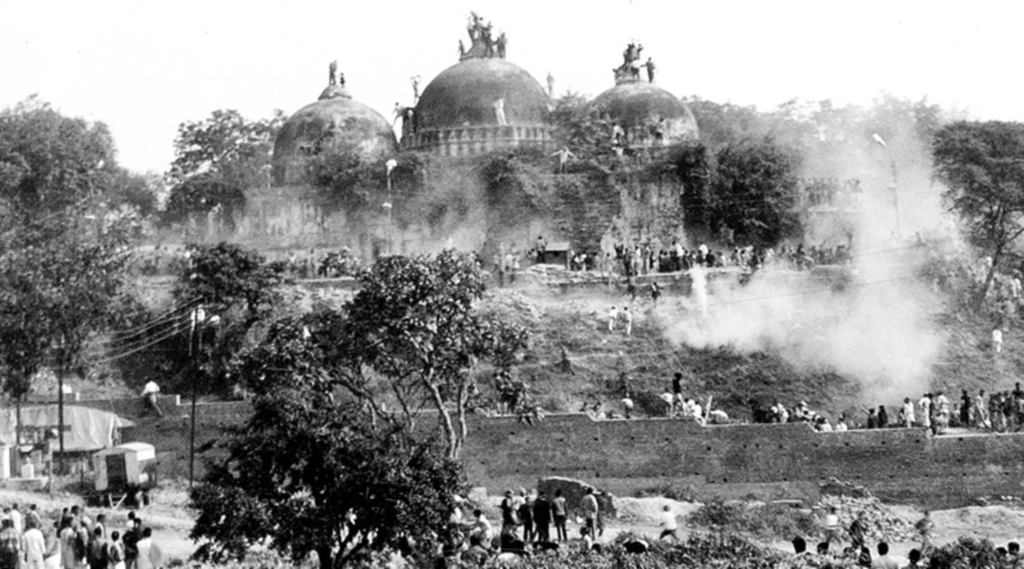
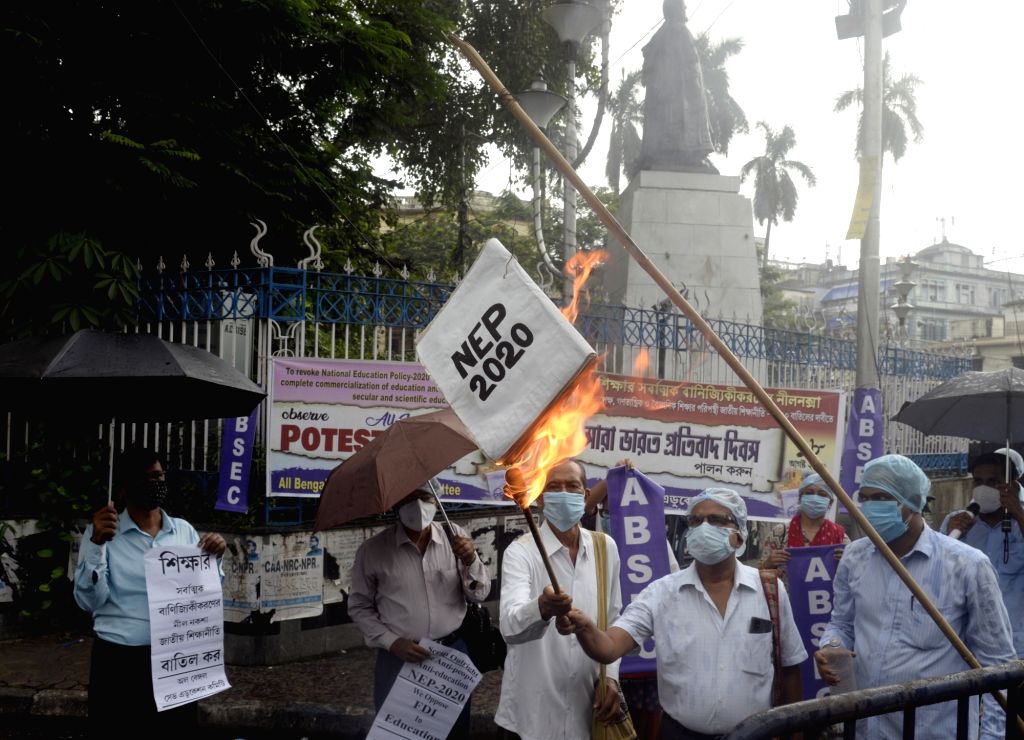
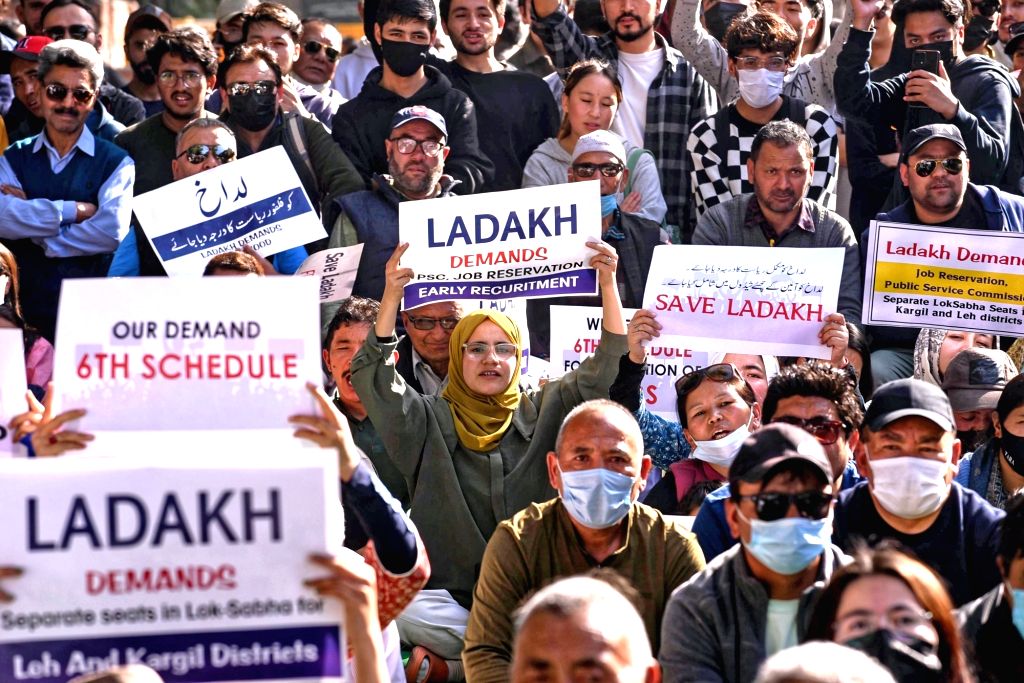
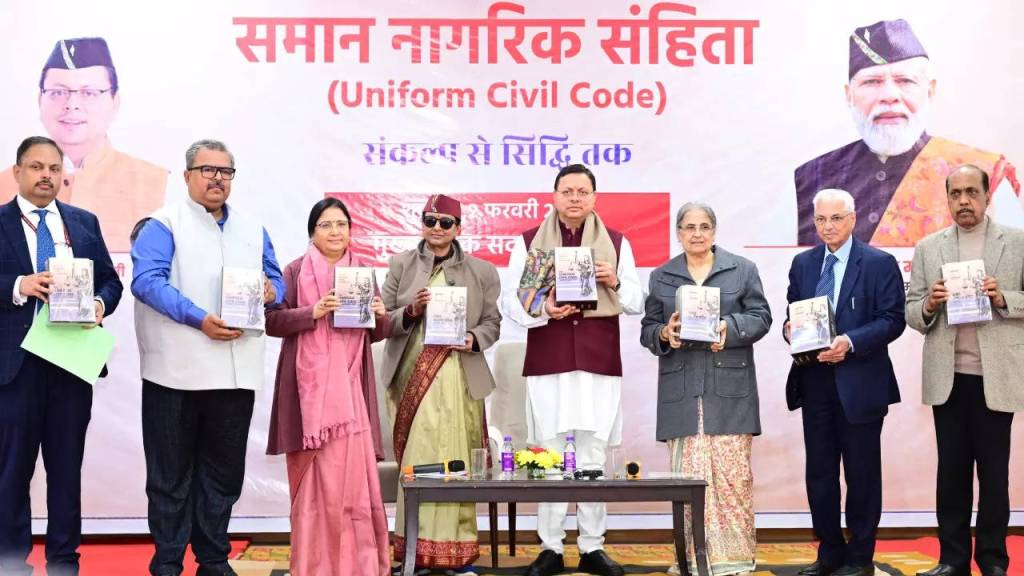
Leave a comment